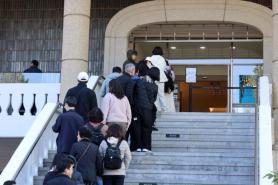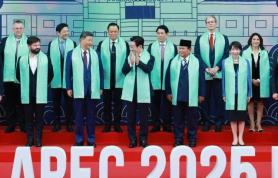
SEOUL, October 31 (AJP) - At the APEC summit in Gyeongju, the summit between the leaders of the United States and China drew intense global scrutiny. After months of escalating trade friction, the world watched as Washington and Beijing sought a breakthrough.
No major trade deal emerged. Still, the two sides agreed to a temporary pause in their hostilities: China postponed its planned export restrictions on rare earth elements, announced on Oct. 9, while the United States suspended its retaliatory 100 percent tariff on Chinese goods.
These concessions, however, did little to mask the deep divide between the two powers. Since trade talks began in April, the United States has levied a 145 percent tariff on Chinese imports, and Beijing has responded with its own rare earth export controls and a 125 percent tariff on American products. A brief truce reached in June unraveled by September, giving way to a new cycle of sanctions and countermeasures.
At its core, this standoff is not about tariffs or trade deficits — it is about power. The United States is determined to preserve its global leadership, while China, under Xi Jinping, seeks to demonstrate the superiority of its state-led model. Xi’s “China Dream” and “Made in China 2025” initiatives are not mere slogans; they represent Beijing’s ambition to dominate 80 percent of the world’s manufacturing sectors within the next decade.
Washington, meanwhile, has revived its own industrial agenda. Under both Trump’s “reshoring” push and former President Biden’s “friend-shoring” approach, the U.S. has sought to rebuild its manufacturing base and secure its supply chains. The White House claims to have attracted $8.9 trillion in investment commitments, not including $350 billion pledged by South Korea.
Beijing’s latest weapon in this economic contest — restrictions on rare earth exports — has sent tremors through U.S. industry. The new rules, due to take effect in November and December, target not only the export of raw materials but also foreign firms that use Chinese rare earths in dual-use technologies, such as defense components.
South Korea, which depends entirely on imported rare earths, finds itself in a precarious position. Last year, Beijing warned Korean firms against exporting products containing Chinese rare earths to U.S. military contractors. More recently, China sanctioned five subsidiaries of Hanwha Ocean, signaling its readiness to pressure American allies.
Yet Seoul missed an opportunity at the APEC summit to address these mounting economic risks. Rather than leveraging the gathering to strengthen its trade resilience or mediate between Washington and Beijing, the South Korean government focused its diplomatic bandwidth on potential talks between North Korea and the United States.
South Korea’s vulnerability underscores an urgent need to diversify its rare earth supply. But doing so will not be easy. Most producers are aligned with China or located in the Global South — regions where Seoul’s diplomatic reach remains limited.
The upcoming G20 summit in South Africa could offer a second chance. By forging partnerships with emerging producers in Africa, Latin America, and Southeast Asia, South Korea can begin to build a more secure and independent supply chain — and avoid being caught in the middle of another great-power struggle.
About the author
Joo Jae-woo is a professor at Kyung Hee University and has served as a visiting scholar at the Brookings Institution and at the Georgia Institute of Technology’s Sam Nunn School of International Affairs.
* This article, published by Aju Business Daily, was translated by AI and edited by AJP.
Copyright ⓒ Aju Press All rights reserved.



